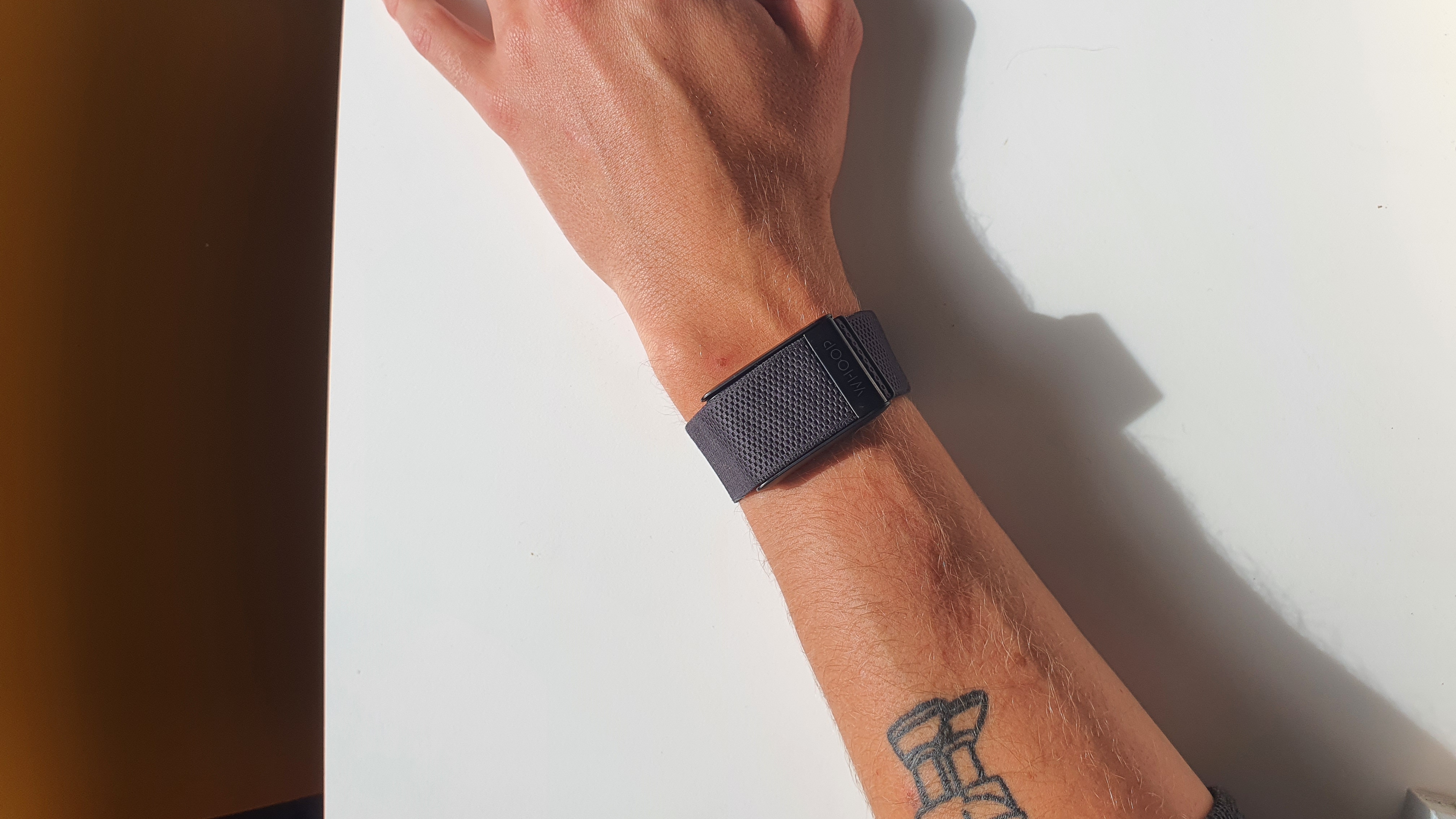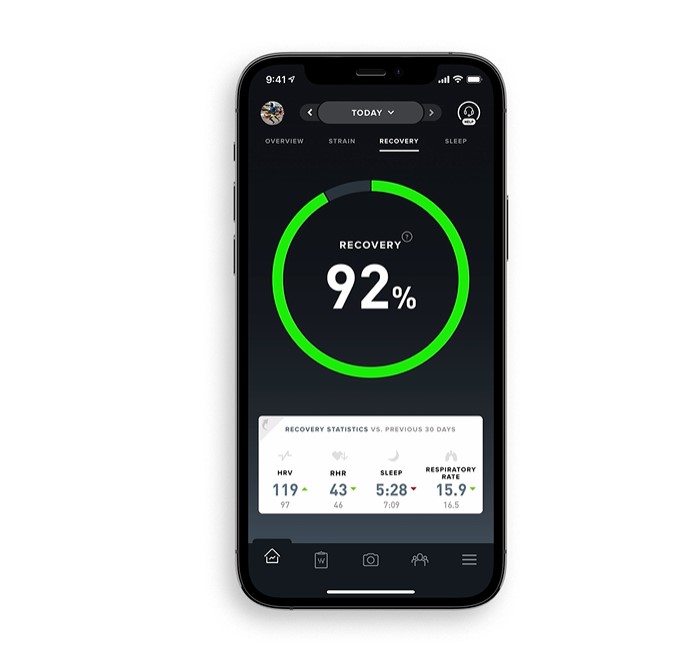Whoop review: can a wrist strap without a screen really make you fitter, healthier and faster? We put it to the test
What sort of insights does the celebrity-endorsed fitness tracker give you - and how useful are they? We tested Whoop 4.0

The device is useful, but has limitations which Whoop’s marketing and educational content tends to gloss over. Whoop has the power to improve your wellbeing, no doubt, but you need to think carefully about the data, and its quality, that the app is presenting back to you. In my opinion, Whoop's ability to provoke positive behaviour change is its main selling point, rather than continuous day-time tracking. Quantifying my sleep habits, encouraging me to change them and then me feeling improvements based on this is valuable.
-
+
Useful sleep tracking
-
+
Slick, fast app which presents data clearly and interactively
-
+
Portable charging and multi-day battery life
-
-
Social media-style ranking based on biological metrics
-
-
Inability to connect a chest strap
-
-
Wrist-based sensor not consistent when sweaty and moving
You can trust Cycling Weekly.

Whoop is a company that anyone who’s watched cycling over the last few months will be thoroughly aware of. They have an active publicity arm - with viewers regularly seeing riders' ‘strain’ score, one of Whoop’s own variables, mid race.
Whoop is a device which is worn on the wrist which tracks your heart beating, measuring resting heart rate, respiratory rate and heart rate variability. On top of this, it tracks your heart rate throughout the day and auto-detects activities. Whoop’s device has no face, it’s not a smartwatch and you can’t see what it’s doing without logging into the app.
The question of who Whoop is actually for is an interesting one: given that their device measures less than other wearables, isn’t GPS enabled and doesn’t have a screen, the selling point is in Whoop’s analytics platform. Analysis of bad data, however, is completely pointless which is why we tested Whoop’s sensor quality against the gold standard chest worn heart rate monitor while running and riding.
Whoop sensor quality

I didn’t hold out a great deal of hope for the wrist-based heart-rate sensor on the Whoop device. The reality is that putting a small flashing light on a sweaty wrist, causing changes in the impedance (how absorbent a substance is to electromagnetic radiation), is a bit like using a random number generator - for my wrist at least, though as many people have found the accuracy of wrist-based HRM does depend on the individual wrist.
I wouldn’t use Whoop as an activity tracker and if I want to measure your heart rate during exercise, I use a chest strap. The inability to pair a chest strap with Whoop is a missing trick and, if Whoop wants to move out of the ‘general wellness’ space and into rivalling Garmin or Polar for activity tracking, this is a feature they need to add.
Outside of training, however, I was impressed at Whoop’s ability to measure resting heart rate values and the consistency seen in HRV values. I was able to see trends over time which broadly aligned to how I was feeling, so in that sense, the Whoop sensor served its main purpose.
Sleep tracking
I learned, quite quickly, that I am not a brilliant sleeper. Whoop detected a number of ‘wake events’ each night which I subsequently started to notice myself. This led to some changes in behaviour such as having my last cup of coffee earlier and trying (but not always succeeding) to stay off my phone, particularly Twitter, immediately before bed. My sleep did improve.
The latest race content, interviews, features, reviews and expert buying guides, direct to your inbox!
These behavioural changes provoked by Whoop and watching how they affect other metrics and your overall sense of wellbeing are where its real value lies.
Strain and recovery scores

Each day, Whoop gives you a ‘strain score’. This is a value between 0 and 21 which is based on your heart rate. For example, on a day when I went out for a 98-mile ride in the heat, my Whoop strain score was 20.7. The following day, I decided to take it easy and didn’t train at all. Because I have a low stress job and can work from home, my strain was 4.7. This small score was accumulated by a walk to the cafe and a trip to the supermarket.
My average heart rate on the high-strain day was 82 versus 59 on my rest day. I asked Whoop how their strain score is calculated and it’s essentially a logarithmic scaling factor multiplied by the amount of time you’re spending in each heart rate zone. This means your strain score could be high from either doing a large amount of volume at lower intensity or doing a smaller amount of high intensity work.
On top of this, Whoop gives you a recovery score in the morning. This is a combination of sleep quality, HRV versus your personal baseline and resting heart rate versus your baseline. I asked Whoop how heavily each of these variables were weighted and they wouldn’t tell me, citing "proprietary algorithms" - it’s worth noting I asked for coefficients rather than access to their code (though the data scientist in me would have liked that).
It seems to me, however, that the weighting of these variables in an individual’s recovery is just that - individual. As a result, using the same coefficient for each Whoop user makes the recovery score almost completely worthless.
The app and social platform
The Whoop app has more features than anyone could possibly need. Away from all the activity tracking, stress and strain scores and data reports Whoop also has a social platform within the app. I decided to join ‘Team Great Britain’ and soon found myself able to organise thousands of people by their various recovery scores and biological metrics.
Generally speaking, I would say it’s not helpful to share this much bio-information about yourself online. For example, you are able to organise the ‘team’ by how recovered they are, from here you’re able to organise by HRV - such that those with a high HRV are at the top of the leaderboard and those with a low one are at the bottom. I was in 560th place.
The issue with this leaderboard is a simple one, HRV is individual and the person with the highest value isn’t necessarily the most recovered… Biological metrics shouldn’t be compared with other people. It’s possible that this data is useful to analyse on a population level, but that’s not what Whoop is doing here. As I see it it's is a tool to drive engagement on their app, ‘building communities’ is tech speak for clickbait.
Battery and charging

The battery life of the Whoop is decent. I found myself charging it around twice a week while I was wearing it 24/7 (apart from swimming, when it sat patiently in my kit bag waiting for me). When it comes to charging, Whoop’s clever battery pack that allows you to charge it while you’re wearing the device. It clips onto the sensor and you charge the battery pack separately. I did have one die on me, but since then the replacement has been fine.
Data reports
One of the unique features of Whoop, relative to other health tracking devices, is the monthly and weekly data reports that Whoop generates for you. These are essentially a summary of the metrics that Whoop has tracked over this time.
The weekly report makes no reference to heart rate variability, but does include summaries of your ‘day strain’ and ‘activity strain’. One of the useful things about this data report is the sleep tracking aspect of it. For example, from my first weekly data report I found that my ‘bed and wake times varied by an average of 1:22 hours’. This is less consistent than I thought and has meant that I’m now paying much more attention to increasing the regularity of my wake and sleep times. This ability to provoke positive behaviour change is Whoop’s main selling point, rather than continuous day-time tracking, in my opinion. Quantifying my sleep habits, encouraging me to change them and then me feeling improvements based on this is valuable.
The monthly data report also contains a slightly irritating lack of fundamental metrics, with Whoop preferring to present you with highly processed data. I’d have liked to see a trend in RHR and HRV plotted along a time axis such that it’s possible to spot chronic stress. Instead we are presented with metrics like 'hours of sleep vs. sleep needed' - where sleep needed is determined wholly by Whoop and is not an objective metric despite it being presented as such. Whoop’s preference for their own processed metrics rather than measurements clouds the picture they’re trying to paint and, on occasion, feels like they’re treating users as if they’re stupid.
The ride
The actual device itself is essentially just a wrist band. Personally, I think it looks good. Most of the time, I forget about it, which is kind of the aim. The only time I didn’t forget about my Whoop was when I went swimming - it’s annoying in the water with the fastening strap coming loose, the device sliding up and down. It lasted about 150m before I took it off and popped it in my bag.
This means that Whoop simply has no idea about six hours of ‘strain’ that I’m accumulating every week. As part of Whoop 4.0, they’ve released ‘Whoop body’ for those of you that can’t work with or wear a wristband for all hours of the day. This clothing has a pouch for the sensor to sit in and track the metrics that Whoop tracks while you’re out and about. Yes, you can even get Whoop pants. Annoyingly, Whoop does not produce a pair of ‘Whoop body’ Speedo-like trunks so my swims will go untracked for the foreseeable.
Value and conclusions
Whoop has three pricing options, biannual payments of £432, annual payments of £264 or monthly payments of £27. It’s not cheap. With every generation of smart watches, more and more of Whoop’s measurements are being made - with most now beginning to measure HRV.
The USP of Whoop is their analytics and data reports. Whoop’s ‘social aspect’ is one I’ll leave up to you - with one’s attitude toward that probably being dictated by what they’re comfortable sharing. Ranking by biological metrics, however, is not a sensible idea and an app feature that’s potentially harmful to users.

Tom Epton is a freelance writer and data scientist. Originally training as a scientist after completing his studies in physics he realised that cycling was what he wanted to spend his life thinking about. Now he works with manufacturers, athletes and teams using cutting edge data science methods to find performance gains. Tom writes primarily about sport-science and tech!